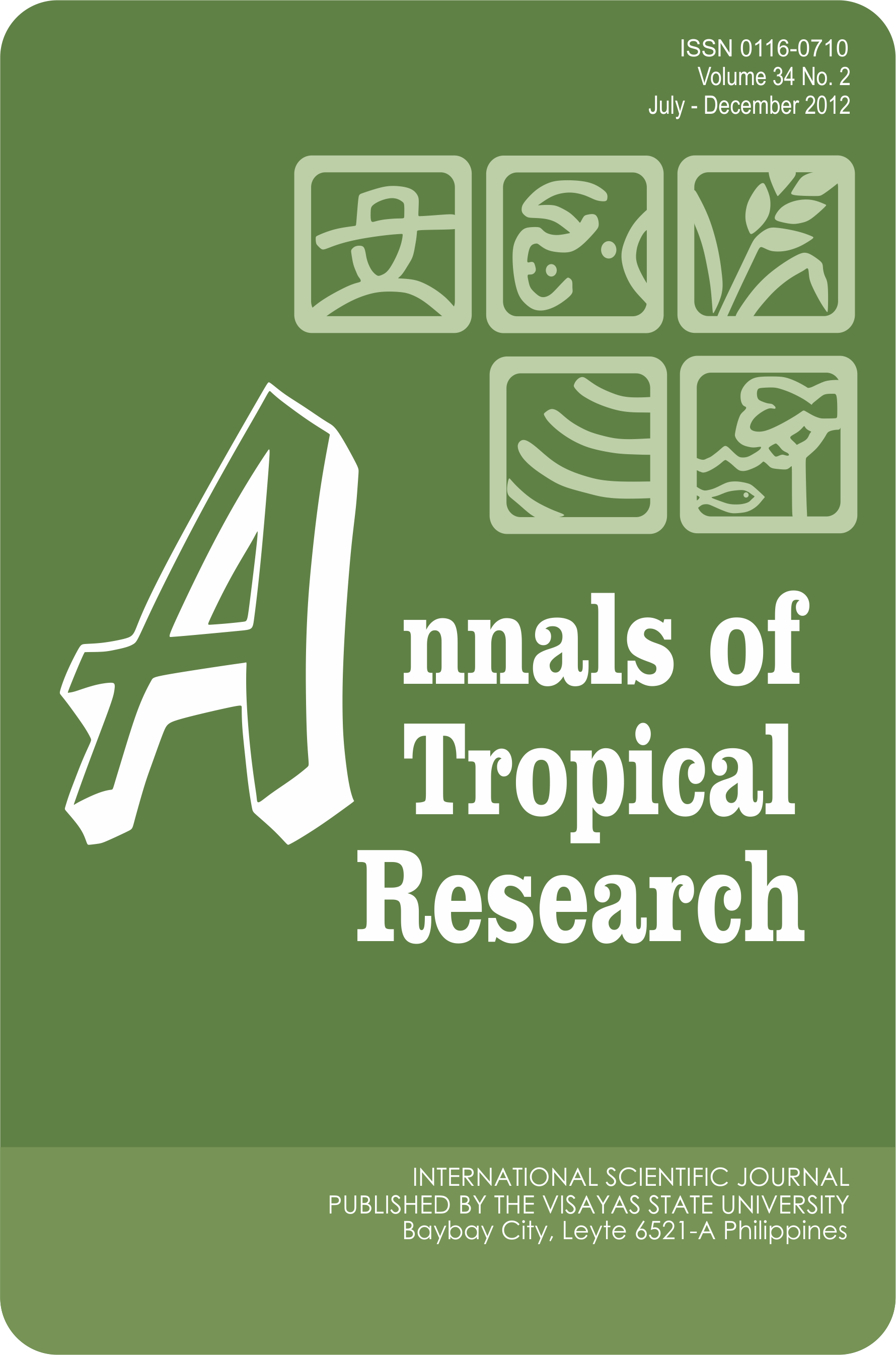Development of Self-pollinating and Early-bearing Philippine Makapuno (Cocos nucifera L.) Hybrids
DOI:
https://doi.org/10.32945/atr3424.2012Keywords:
soft-endospermed coconut, intraspadix overlapping, precocity, Lauric acidAbstract
The makapuno-bearing character found only in the cross-pollinated Laguna Tall coconut variety and the self-pollinating character of dwarf coconuts were combined into new makapuno genotypes through hybridization to limit cross pollination which is a problem among tall makapuno palms. F1 hybrids between Coconiño (CÑO) and tall Makapuno (TMAC) and Tacunan (TAC) x TMAC were early-bearing with high intraspadix overlapping percentages of 85.7% and 70.9%, respectively. Mean makapuno yield was 26.8% in CÑO x TMAC and 28.2% in TAC x TMAC indicating the presence of high degree of self-pollination and the dominance of the gene for the trait. In vitro grown homozygous F2 makapuno palms started flowering at 24 months old. F2 CÑO x TMAC (VMAC 1) had a mean yield of 100% makapuno, 49 to 132 nuts/palm/year and nuts weighing 332 to 750g/dehusked nut. F2 MRD x TMAC (VMAC 2) yielded a mean of 97% makapuno, 63 to 163 nuts/palm/year and nuts weighing 288 to 1,180g each. F2 TAC x TMAC (VMAC5) had 95% makapuno, nuts weighing 736g to 1,975g/ dehusked nut. High makapuno yield of the F2 hybrids affirmed the dominance of the gene for self pollination in coconut. Ten month-old nuts of the F2s had at least 18 mm thick meat and Lauric acid (C12) content ranging from 47.10% to 48.60%. The three F2 hybrids were registered with the National Seed Industry Council (NSIC) in 2008 as the first homozygous makapuno hybrids in the Philippines.
Downloads
Submitted
Published
How to Cite
Issue
Section
License

This work is licensed under a Creative Commons Attribution-NonCommercial-ShareAlike 4.0 International License.











